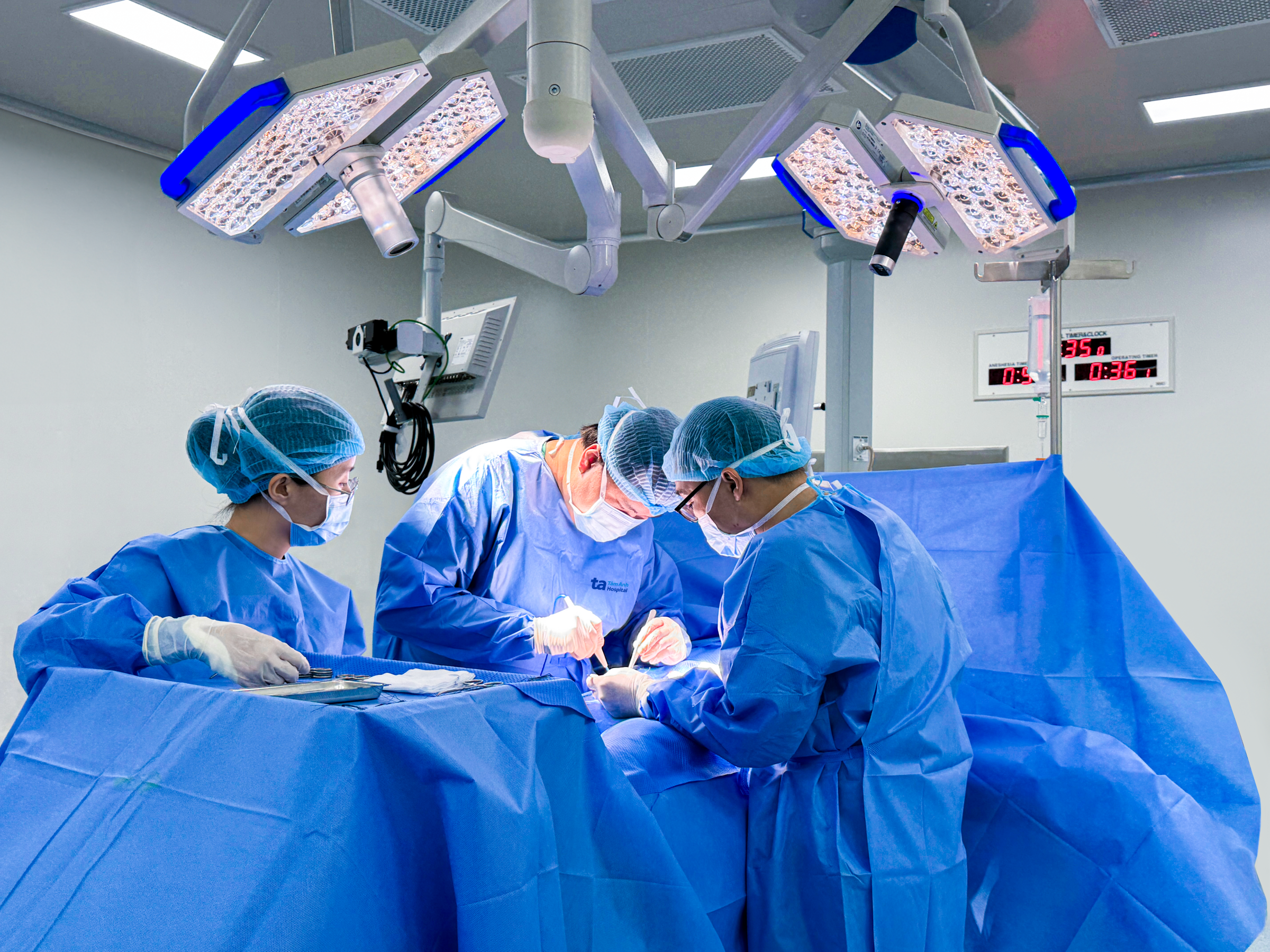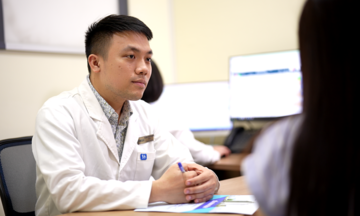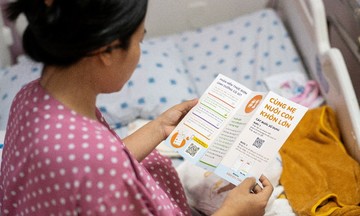Doctor Doan Ngoc Thien from the Andrology Department of the Urology - Nephrology - Andrology Center at Tam Anh General Hospital in Ho Chi Minh City, explained that grade 3 varicocele is a condition where the pampiniform plexus and spermatic cord veins above the testicle are dilated. This causes blood congestion and increased temperature in the groin area, leading to sperm damage and testicular atrophy. Mr. Kien's testicles had shrunk to one-half their normal size, with the right one showing signs of damage.
Doctors performed microsurgery to ligate the dilated veins, redirecting blood flow to healthy veins. This improves blood supply to the testicles and helps restore sperm production. The surgical team used biological glue to seal the incision, allowing the patient to bathe and resume normal activities.
A follow-up appointment 5 days later showed Mr. Kien was recovering well. He had previously contracted mumps, which can also cause testicular atrophy as a complication. However, there is no treatment for this type of atrophy, so the doctor advised him to monitor any changes in his groin area. In cases of testicular shrinkage, pain, or if a couple is unable to conceive after a year of trying, it is recommended to seek medical attention. If the complication results in the absence of sperm, assisted reproductive technologies can be explored to help the couple have their own biological children.
 |
Doctor Doan Ngoc Thien (center) and the surgical team operating on the patient. Photo: Hoai Thuong |
Doctor Doan Ngoc Thien (center) and the surgical team operating on the patient. Photo: Hoai Thuong
According to Dr. Thien, varicocele is relatively common, affecting about 15-17% of men. Early-stage varicocele often presents no noticeable symptoms, leading men to overlook it or avoid seeking medical attention. Most diagnoses occur in later stages when dilated veins in the scrotum become palpable, testicular pain develops, or testicular size decreases. The condition can impact male sexual function, reduce quality of life, and increase the risk of infertility.
Some men may experience varicocele alongside other conditions like blocked vas deferens, genital infections, a history of mumps, or genetic mutations. These cases require comprehensive examination and a combination of treatment methods.
To prevent varicocele, men should maintain a healthy weight, avoid prolonged standing or sitting, wear loose-fitting clothing, and exercise regularly. Leg strengthening exercises such as leg raises, calf raises, and walking can improve blood circulation and prevent the formation of new varicose veins. A nutritious diet rich in flavonoid-containing fruits and vegetables can also promote blood circulation and reduce the risk of blood clots. Men should seek prompt medical attention if they notice any abnormalities in their reproductive system.
Hoai Thuong
*The patient's name has been changed.












